Chapter 9
Exploring 3D-Printed Artwork
IN THIS CHAPTER
![]() Creating clothing and accessories
Creating clothing and accessories
![]() Crafting customized equipment
Crafting customized equipment
![]() Expressing individualism in design
Expressing individualism in design
![]() Bringing the abstract to life
Bringing the abstract to life
Additive manufacturing offers many new techniques for creating interlocking components or objects with complex interior structures, and it’s no surprise that creative minds find the printed objects attractive. These techniques allow artists to create designs or structures too complicated to be created through traditional means.
This chapter provides a window into some artistic creations made possible through 3D printing, from personal designs a few centimeters long to multistory sculptures for outdoor display. The artists discussed in this chapter graciously allowed us to include illustrations of their designs, and many have shared them for download by others. Where possible, we indicate the sources so that you can try some of these works when you build your own 3D printer in Part 5.
Adorning the Body
Among the first types of 3D-printed adornment are personalized jewelry and plastic-based clothing, matching design and visual appeal to individual taste and preference. The customer selects the virtual model as well as the material used to fabricate the physical form. In Chapter 6, we discuss the virtual storefronts of artist Asher Nahmias (Dizingof), at which he offers his mathematically inspired designs for sale through Ponoko (www.ponoko.com) in gold, silver, and other materials.
Figure 9-1 shows an online storefront shared by multiple designers, where physical objects and some virtual 3D models can be purchased for download for local fabrication, such as shoes and 3D-printed clothing. Commercial vendors use the same technologies to design custom-fit athletic apparel, reducing the weight of items or adding features not available in traditionally manufactured alternatives. Because a runner’s shoes can now be 3D-printed with cleats and structural elements placed according to the way the runner moves, shoes can be reduced to minimal weight and perfectly fit to provide a fractional competitive advantage.

FIGURE 9-1: An online storefront for 3D-printed fashion.
Personalizing Your Environment
Today’s craftspeople and artists can take advantage of additive manufacturing to customize their tools to fit individual body dimensions and preferences.
Figure 9-2 shows several 3D-printed guitar bodies created by Olaf Diegel, who can personalize a guitar body for a performer’s arm and finger length, as well as any aesthetic preference. These items can be created to match a band’s style or marketing efforts to promote the band’s music.

FIGURE 9-2: Olaf Diegel’s custom 3D-printed guitar bodies for fully functional electric instruments.
Also, abstract information can be fabricated in solid form to personalize the environment. Using 3D-printing systems, you can create custom-curved, biologically inspired shapes for dwellings and outdoor statues, such as the treelike form shown in Figure 9-3.
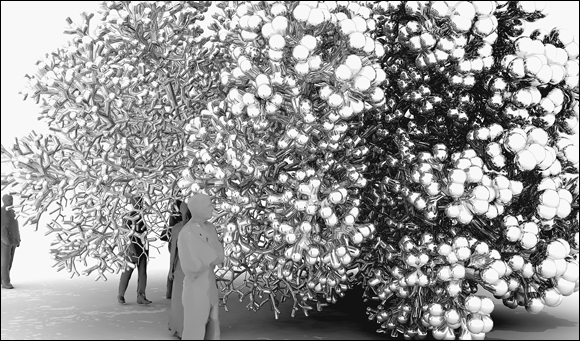
Image courtesy of Francis Bitonti Studios
FIGURE 9-3: A 3D-printed artistic outdoor statue design.
3D printing offers the potential to customize the human body as well. When the field of bioprinting matures, new trades and services may offer replacement body parts, printing replacements for failing organs or even improvements for muscles or limbs. When actors can transform their appearance to fit a particular role or athletes can add new muscle and connective tissues, legal systems will have to develop new methods of regulations and identity management.
Incorporating Individualism in Design
In past eras, craftsmen chiseled stone or carved wood to create items unique in form and function. Mass manufacturing replaced this labor-intensive process by fabricating large numbers of goods fast enough to serve a massively expanding population, but at the cost of unique features common in earlier designs. Many older buildings illustrate this development. Gargoyles and other decorative features adorn their walls, even in locations not easily visible to passersby. Today’s architectural slab-construction is undoubtedly faster, but those small details have been discarded as unnecessary affectations.
With the development of 3D printers, we can return to a less “slab-fab” world and return artistic expression to designs. 3D printers might even be used to fabricate replacement gargoyles to sit atop buildings’ rooflines, restoring and preserving the unique artistry of each building.
Figure 9-4 shows vases produced from tie-dyed nylon filament, based on Richard’s own designs and others shared on Thingiverse. The choices of local fabricators make each vase unique in form and color. Integrating personal preferences into new creations creates a unique environment, changing the mass-produced, one-size-fits-all world.

FIGURE 9-4: Richard’s tie-dyed nylon vases.
It is possible that even more unique changes to the design may be integrated into our mechanisms, such as the delightful experimental design for a research submarine known as the Octopod (see Figure 9-5), designed by Sean Charlesworth. It’s a biomimetic (biolike) design for an underwater recovery and salvage vehicle, inspired by the animal that performs a similar type of exploration. Borrowing from nature allows new designs to take advantage of generations of specialization, affording new qualities not present in traditional alternatives.
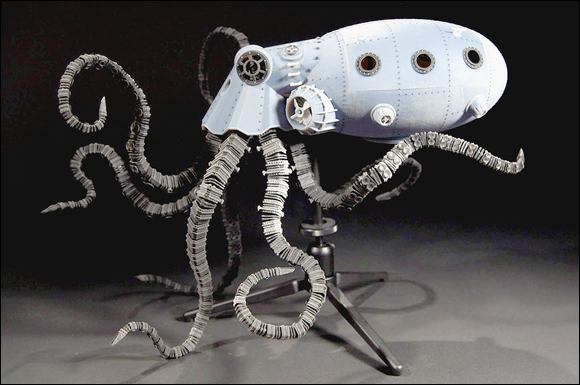
Image courtesy of Sean Charlesworth/Charlesworth Dynamics
FIGURE 9-5: The Octopod underwater recovery and salvage vehicle.
Charlesworth designed an iris door to allow divers to exit the Octopod and then shared this door in the form of a 3D-printable gift box as Thing #31855 on Thingiverse. Kirk printed the copy shown in Figure 9-6 for his daughter to use to store earrings and other small items, using filament colors she selected to match her room’s decor.
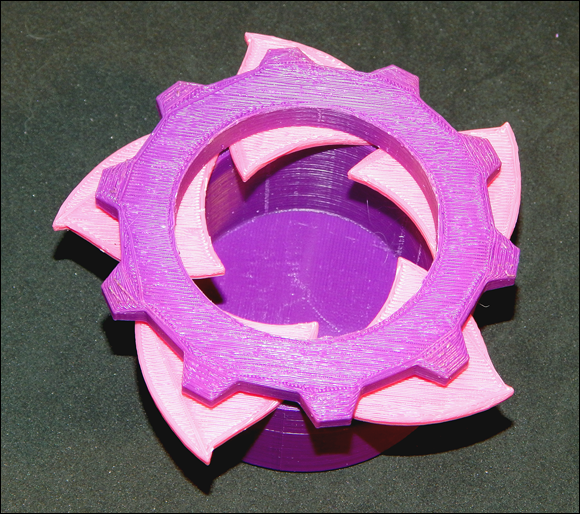
FIGURE 9-6: Kirk’s daughter’s iris box.
Visualizing the Abstract
3D printing is a magnificent medium for artistic expression because it allows abstract ideas to be represented in solid form. Difficult concepts become easier to understand than simple descriptions and flat illustrations would allow.
Mathematical models are amazingly detailed and fluid in their representation. Designs (see Figure 9-7) like those of Asher Nahmias (Dizingof) and Stijn van der Linden (Virtox) can transform simple equations into elegant works of art.

FIGURE 9-7: Mathematically inspired 3D-printable objects originally obtained from Thingiverse.
The Sugar Lab also uses mathematical models to create edible creations formed from granular sugars (see Figure 9-8) — examples of new options for personalizing food products through additive manufacturing.
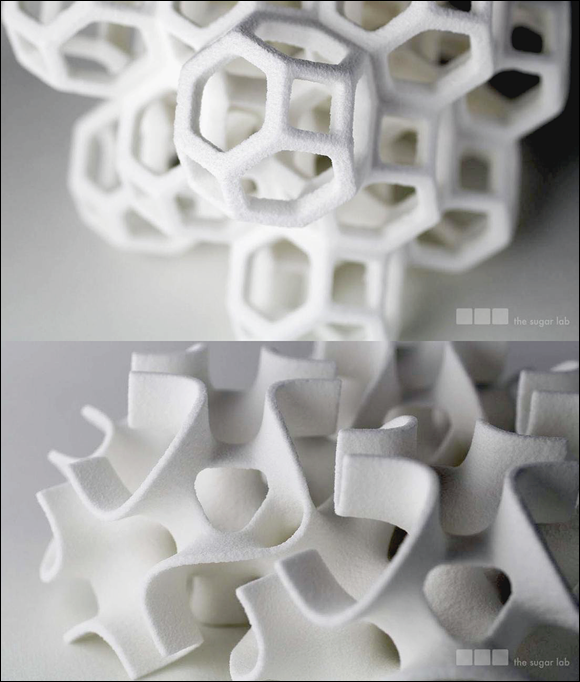
Image courtesy of the Sugar Lab
FIGURE 9-8: Edible math art.
Sharing Art
Sharing 3D-printable objects can offer ways for artists to engage with the public in the creation of crowdsourced art, such as the PrintToPeer effort created by Jeff de Boer (www.printtopeer.com/sculpture), a Canadian artist known for his 3D-printed designs inspired by armor such as chain, scale, and plate mail. de Boer has created a site to facilitate his artwork where individuals can create their own personalized designs for each scale (see Figure 9-9) and then print copies.
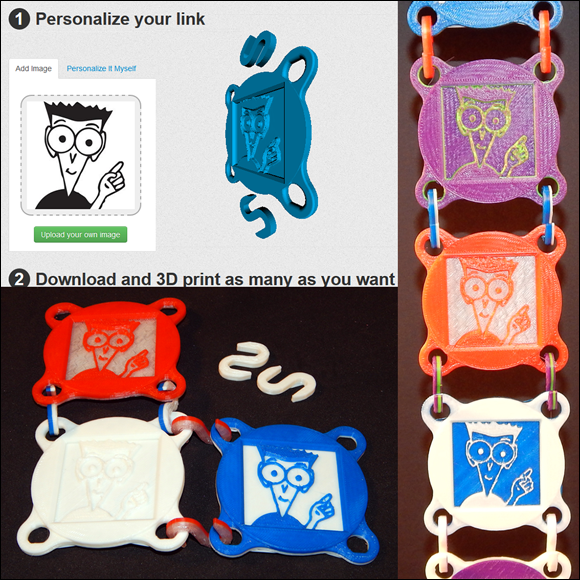
FIGURE 9-9: PrintToPeer scales using the For Dummies design from this book’s cover.
Figure 9-9 shows the design Kirk created based on the Dummies Man logo, which he downloaded and printed, using combinations of colors of plastic filament. These scales will be included in the final large artwork compiled from all contributors by Jeff de Boer along with a few designed by Kirk’s children and students that they decided to print for themselves. The design is also available at Shapeways.
One practical use of sharing art is to build momentum within the 3D-printing community. Kirk hands out samples of 3D-printed materials whenever possible, which has encouraged others to contact him to find out more about additive manufacturing and his SOLID Learning educational program. The word is getting around. Kirk once had a university dean call him to show him a remarkable 3D-printed movie prop from Raiders of the Lost Ark (see Figure 9-10) — which Kirk had originally printed some time ago as an example for a workshop using a fan’s design shared as Thing #118125 on Thingiverse.

FIGURE 9-10: A copy of the movie prop from Raiders of the Lost Ark.

 Art may serve a purpose beyond artistic value, so we encourage you to design whatever your ideas suggest and collect 3D models you enjoy. Print copies of these models and hand them out to spread the word about additive manufacturing. If you want someone to call you for more information, simply include your name and contact information in the object you print. It costs no more to create an object with a customized message than it does to print one without personalization.
Art may serve a purpose beyond artistic value, so we encourage you to design whatever your ideas suggest and collect 3D models you enjoy. Print copies of these models and hand them out to spread the word about additive manufacturing. If you want someone to call you for more information, simply include your name and contact information in the object you print. It costs no more to create an object with a customized message than it does to print one without personalization.